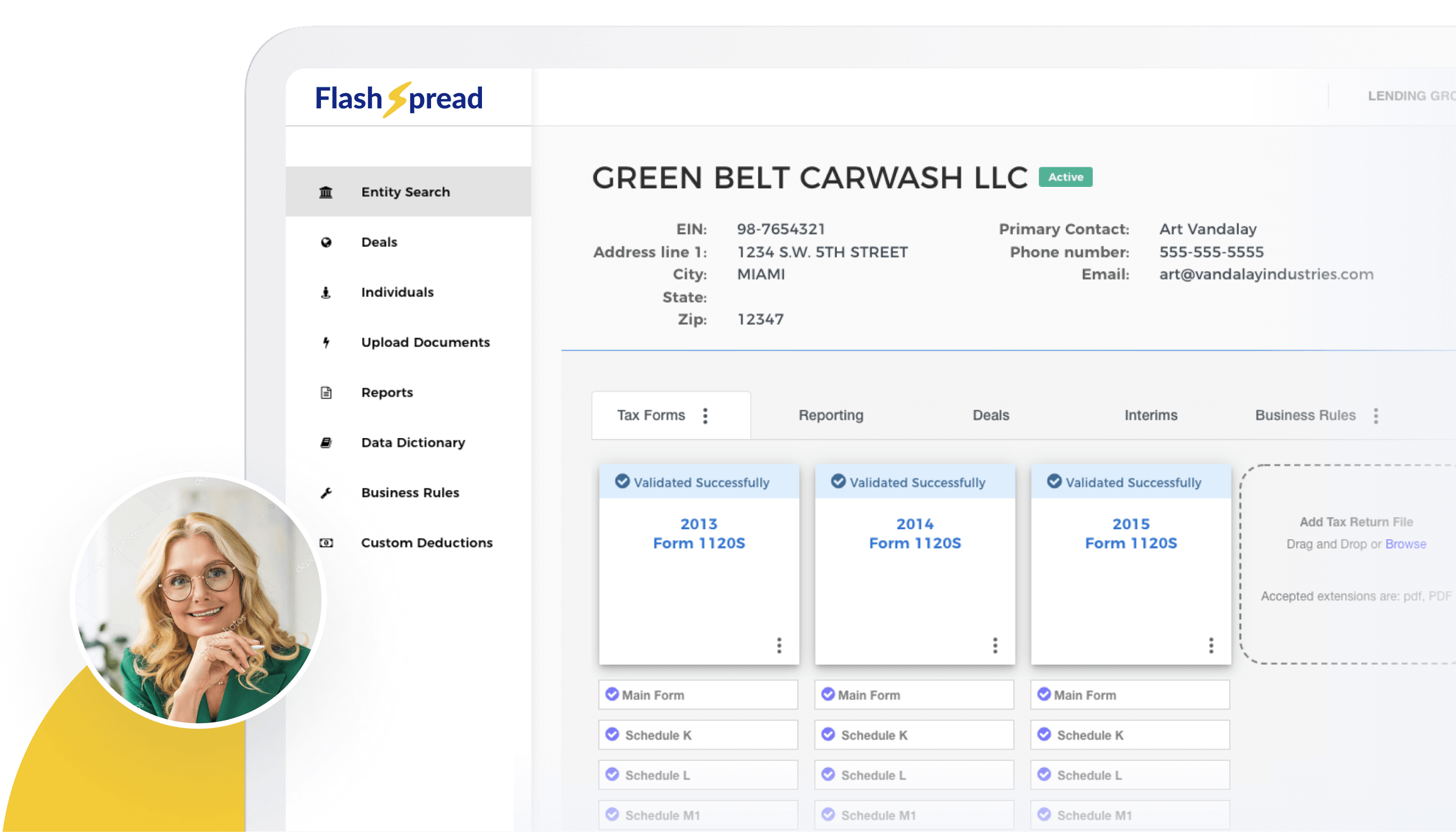In today’s data-driven business landscape, the accuracy and timeliness of financial reporting are paramount. However, according to a study conducted by the Journal of Accountancy, human error rates in manual data entry can range from 1% to 5%, depending on factors such as the complexity of the data and the experience of the data entry personnel. This highlights the inherent challenges associated with manual data input.
These errors can lead to inaccurate financial analysis, misinformed decision-making, and potential compliance issues. Many organizations are turning to automated financial spreading solutions to mitigate these risks, which streamline data processing and enhance reporting accuracy.
Table of Contents
Understanding Automated Financial Spreading
Traditionally, financial spreading has been labor-intensive, requiring analysts to manually input financial data into spreadsheets and review documents line by line. While this method ensures accuracy, it is time-consuming and prone to human error. Automated financial spreading revolutionizes this approach by leveraging cutting-edge technology to digitize, analyze, and present financial data efficiently and scalable.
With automated solutions, the manual extraction of balance sheets, income statements, and other financial documents becomes a thing of the past. These tools use advanced algorithms and artificial intelligence (AI) to interpret economic data, ensuring consistency, reducing errors, and delivering actionable insights almost instantly.
Why Real-Time Insights Matter
In finance, timeliness is critical. Whether it’s evaluating loan applications, conducting risk assessments, or preparing for regulatory audits, delays in accessing financial data can hinder progress and impact business outcomes. Automated financial spreading eliminates bottlenecks by providing real-time insights into financial performance.
With real-time reporting capabilities, businesses can:
- Enhance decision-making: Access to up-to-date data ensures that leaders make informed decisions based on the latest financial metrics.
- Improve efficiency: Automated systems reduce the time spent on repetitive tasks, allowing teams to focus on strategic initiatives.
- Stay competitive: Real-time insights enable companies to react swiftly to market changes in dynamic industries.
- Ensure compliance: Regulatory requirements often demand accurate and timely financial reporting. Automation simplifies this process, reducing the risk of non-compliance.
Key Benefits of Automated Financial Spreading
1. Accuracy and Consistency
Human error is a common challenge in manual financial spreading. Even the most meticulous analysts can overlook details or make mistakes in data entry. Automated financial spreading ensures accuracy by eliminating manual data extraction and analysis intervention. This consistency is especially vital for industries like banking, where precision is non-negotiable.
2. Time Savings
Time is a precious commodity in finance. By automating the data entry and analysis processes, financial institutions and businesses can save hours—if not days—of work. This allows teams to allocate their time to higher-value tasks, such as interpreting data trends and developing strategic initiatives.
3. Scalability
As organizations grow, the volume of financial data they manage increases exponentially. Automated financial spreading is designed to handle large datasets effortlessly, ensuring scalability without sacrificing efficiency or accuracy.
4. Enhanced Data Security
Automation solutions often come with built-in security features that protect sensitive financial information. By centralizing data on secure platforms, businesses can reduce the risks associated with manual handling and fragmented storage.
5. Customizable Reporting
Automated systems can generate customized reports tailored to specific business needs. This flexibility ensures that stakeholders receive relevant insights without wading through irrelevant data.
How Automated Financial Spreading Powers the Future of Reporting
The shift toward automation is not just a trend but a fundamental change in how businesses approach financial reporting. The future of reporting lies in the ability to harness real-time insights to drive innovation and growth. Automated financial spreading plays a pivotal role in this transformation by enabling organizations to:
Predict Future Trends
By analyzing historical financial data and current market conditions, automated tools can help businesses forecast future performance. This predictive capability empowers companies to stay ahead of challenges and seize opportunities.
Subscribe to BeSmartee 's Digital Mortgage Blog to receive:
- Mortgage Industry Insights
- Security & Compliance Updates
- Q&A's Featuring Mortgage & Technology Experts
Enhance Collaboration
Real-time financial insights facilitate collaboration across departments. Teams can access the same up-to-date data, ensuring alignment and reducing miscommunication.
Simplify Complex Analyses
Complex financial analyses, such as cash flow projections and risk assessments, can be daunting. Automation simplifies these processes, breaking them into digestible insights that are easy to understand and act upon.
Support Sustainable Growth
By streamlining financial processes, businesses can allocate resources more effectively, driving sustainable growth and profitability.
Real-World Applications of Automated Financial Spreading
Banking and Lending
In the banking sector, assessing the creditworthiness of loan applicants requires a thorough evaluation of financial documents. Automated financial spreading accelerates this process by quickly extracting and analyzing financial data, enabling banks to make faster lending decisions.
Investment Analysis
Investors rely on detailed financial insights to make informed decisions. Automated systems provide real-time data, giving investors the tools to evaluate opportunities and mitigate risks effectively.
Corporate Finance
For large corporations, managing internal financial data can be a daunting task. Automation streamlines reporting and forecasting, allowing finance teams to focus on strategy and innovation.
Regulatory Compliance
Industries with strict compliance requirements, such as healthcare and energy, benefit significantly from automated reporting. These tools ensure that financial data aligns with regulatory standards, reducing the risk of penalties.
The Role of FlashSpread in the Evolution of Financial Reporting
As a leader in automated financial spreading, FlashSpread is at the forefront of this transformation. FlashSpread empowers businesses and financial institutions with innovative solutions that simplify financial data analysis, delivering real-time insights with unparalleled accuracy.
BeSmartee’s FlashSpread solution integrates seamlessly into existing workflows, ensuring a smooth transition to automated processes. If you’re a banker assessing loan applications, the FlashSpread solution is tailored to meet your needs.
Roundup
The future of financial reporting is here, and it’s automated, efficient, and insightful. Lenders who embrace automated financial spreading today will be better equipped to navigate the challenges of tomorrow. By leveraging real-time insights, lenders can enhance decision-making, improve efficiency, and stay ahead of the competition.
Discover how FlashSpread can help you access the power of automated financial spreading. Contact us today to schedule a demo and see how we can elevate your tax return analysis capabilities to the next level.




